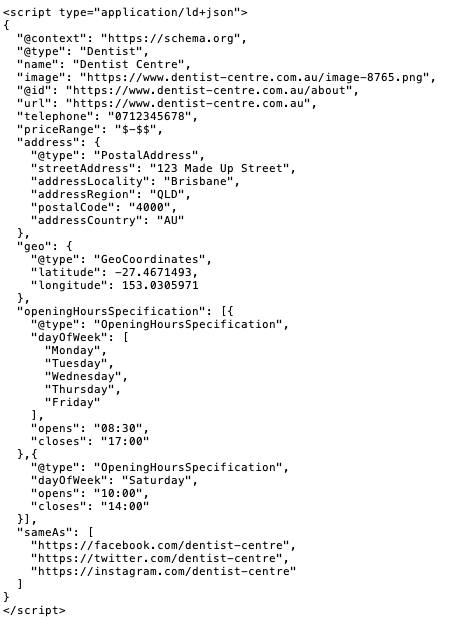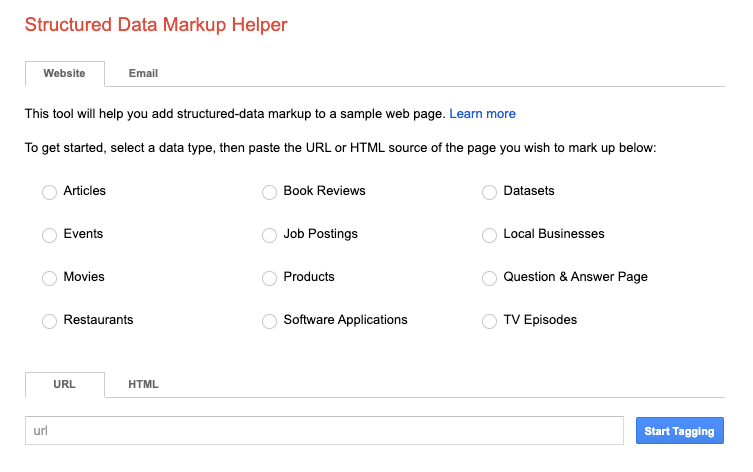We hope you’re ready for another deep dive packed with the technical details that excite our team just as much as they do Google. This article covers some of the most essential and intricate elements of structured data, search engines, and the vital information that connects them all. So, buckle up and get ready to explore the fascinating world of using structured data.
What is Structured Data?
Also known as Schema, structured data is a specialized vocabulary designed specifically to describe data in a way that machines can easily understand. It covers various aspects including relationships between websites, email addresses, entities, actions, and other technical elements that keep the digital ecosystem running smoothly.
Just as humans have their own language to communicate, the online world uses Schema to convey the meaning behind different parts of the web—known as entities—allowing search engines to deliver users a more accurate and meaningful experience.
Over time, Google has increasingly focused on understanding meaning, developing semantic-based algorithms that have become a core part of how they rank and display information. Structured data provides an efficient language for the internet to communicate with its many technical systems.
By integrating structured data formats like Schema into your website, you provide Google with crucial information that helps its bots interpret the content they crawl. This adds meaning and context to elements that would otherwise be ambiguous.
When you use data structured for this purpose, it can generate what are called rich results, or rich snippets. These enhanced listings appear in Google search results, offering users extra detail and value about your website. Rich results not only improve your site’s visibility but are also known to positively impact search rankings and conversion rates.
Formats of Schema
Schema is made up of an extensive list of structured data types presented in formats that search engines can easily read and interpret. The bots use this language to understand the meaning of your content, then connect it to user queries, which influences how your site ranks in search results.
The taxonomy behind this language is quite technical, but essentially it includes Google’s structured data categories that organize people, places, and things across the web. Various formats can be found at the official resource—schema.org. The most commonly used structured data markups include:
- Organisations
- Local Businesses
- Services
- Products / Reviews
- Events
- People (Person)
- Articles
- Recipes
- Medical illnesses/conditions

These categories play a key role in helping search engines understand what your website is actually about. By using this type of markup, you add meaning and context to your pages—both of which are essential for improving your rankings on search engines.
So, what does this look like when it appears as structured data in search results? A good example would be searching for a movie. In the results, you’ll often see additional information like the rating, genre, release year, and more. These enhanced listings—known as rich snippets—are made possible through structured data.
This data is provided to Google using Schema vocabulary, which essentially translates your page’s content into a language that search engines understand. Structured data can be implemented in a few different coding formats, including RDFa, JSON-LD, and Microdata, each offering a way to present this valuable information clearly to search engine bots.
What is JSON-LD?
Similar to Microdata and RDFa, JSON-LD stands for JavaScript Object Notation for Linked Data. It’s a format used to apply structured data to web pages by embedding Schema markup directly into a document.
Essentially, JSON-LD allows you to annotate content using structured data that can be easily copied and pasted into a web page—typically placed within the <head> or <body> sections of the HTML.

Without diving too deep into the technical side, structured data formats like JSON-LD are specifically designed to make implementing Schema simple and accessible—making it especially beginner-friendly. If you’re just starting out with this kind of coding, JSON-LD is a great way to begin understanding how Schema functions in a practical context.
JSON-LD official Documentation is widely used across websites of all types and has been explicitly recognised by Google as a key component of modern website design. In fact, Google has previously stated that JSON-LD should be used wherever possible on a page.
How to Create Your Own Schema?
Alright, this is where things get a little more technical—but thankfully, our favourite search engine steps in to make it easier. There are plenty of tools available that can help you convert unstructured data into structured data, and some may suit your needs better than others.
However, Google’s own ‘Structured Data Markup Helper’ continues to be one of the most reliable and user-friendly options out there.

All you need to do is highlight the elements on your page that you want to apply structured data to. Then, label them accordingly—for example, selecting “Article” if it’s a blog post—and click ‘Create’. The tool will then generate the structured data code for you, giving you the option to choose the format you prefer.
If you’re unsure whether your structured data (a.k.a. Schema) is working correctly, there are easy ways to audit it. A top choice is SEMRush’s Site Audit Tool, which checks your entire site for structured data and shows you what percentage of your pages are currently using Schema—among many other insights. Another must-have is Google’s Structured Data Testing Tool, which lets you analyse specific pages and validate the structured data. We recommend bookmarking both for a solid, go-to toolkit.
If you’re using WordPress, combining Schema with a well-rounded SEO plugin can significantly streamline the process. Many popular SEO plugins offer built-in Schema support and automation features—making it even easier to apply structured data site-wide.
Lastly, make it a habit to regularly check each page to ensure the structure is doing its job. That means reviewing every URL, HTML code, scripts, plugins, product markups, tags, SQL use, page titles, and broader SEO elements to confirm they’re all working in harmony with your structured data setup.
How to Get Rich Snippets from Google?
If you want to make the most of structured data, one of the best places to start is with the official content markup guide from Google. It helps you learn how to apply Schema correctly so your pages are eligible for rich snippets in search results, which show content more attractively (think movie listings with ratings, genre, year, etc.).
Keep in mind that structured data and Schema evolve frequently. Google regularly updates its structured data guidelines, so staying current is key. The language formats, properties, and what Google accepts may shift over time, meaning what worked last year might need tweaking now.
How Schema Helps Search Engines?
Search results aren’t just displayed randomly — Google uses many criteria to assess page value. Structured data gives Google clearer clues about what’s on your page and what it means. In effect, you are telling Google: “Here’s what’s on this page, and why it matters.”
That information helps crawlers who can’t ‘see’ like humans do, understand what the page is about—improving how content is displayed in search results.
Can Structured Data Improve Your Ranking?
This is debated among SEOs. The simple answer: yes, but indirectly. Structured data doesn’t guarantee higher rankings on its own, but it helps in several ways:
- Rich snippets make your listing more visible and engaging, which can improve click‑through rates.
- Better UX and visibility tend to lead to better performance overall, which can help rankings over time.
- It adds credibility and relevance signals to Google, which may contribute to better outcomes.
What Google Requires & Things to Watch Out For?
Drawing on Google’s guidelines:
- Use one of Google’s supported formats: JSON‑LD is strongly recommended, though Microdata and RDFa are also accepted.
- Make sure your structured data reflects actual, visible content on the page (don’t hide info).
- Include required properties for each Schema type. Using the recommended properties helps improve quality. Missing required fields can disqualify your page from rich results.
- Keep the structured data accurate, up‑to‑date, and relevant. Outdated or wrong data (e.g. product out of stock, rating changed) can harm or remove rich snippet eligibility.
- Do not block the markup from crawlers (e.g. via robots.txt, noindex, or login requirements). Google must be able to access both the content and the structured data.


